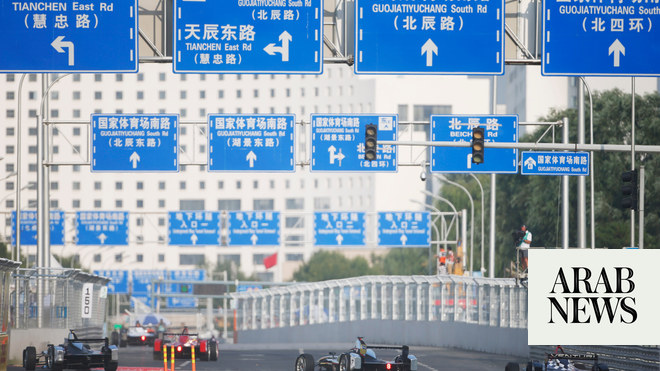
Indian PM, Chinese president meet on sidelines of BRICS Summit in Kazan, Russia
First formal talk between parties since 2020 deadly clashes on disputed India-China border
NEW DELHI: After years of tensions, signs of a thaw are emerging in Indian-Chinese relations, experts say, following the meeting of Prime Minister Narendra Modi and President Xi Jinping in Russia.
Modi and Xi met on Wednesday on the sidelines of the BRICS Summit in Kazan. It was their first formal talk since the 2020 clashes on the disputed border between India and China led to a military buildup on both sides.
The 3,440 km-long Himalayan border has been a cause of tensions for decades and the two countries fought a war over it in 1962. The clash in Galwan Valley in 2020 was their worst confrontation since then, with at least 20 Indian and four Chinese soldiers killed.
The military standoff that followed affected bilateral business ties, leading to India banning several Chinese mobile apps, including TikTok, and stopping passenger flights to China.
Rounds of negotiations taking place over the past four years had not yielded any resolution but during Wednesday’s meeting, Modi and Xi agreed to “explore a fair, reasonable and mutually acceptable solution to the boundary question,” the Indian Ministry of External Affairs said in a statement.
It was widely seen as a “positive first step” signaling a thaw, Manoj Kewalramani, chairperson of the Indo-Pacific Research Program and a China studies fellow at the Takshashila Institution in Bangalore, told Arab News.
“Having this sort of abnormality in the relationship does not suit either side in the long run. So, there has been this impetus that we need to find some pathway to arriving at some sort of a new balance in the relationship,” he said.
“From an Indian point of view, of course engaging with China is important … you can’t necessarily have an abnormal high-intensity tense border area with such a neighbor for a long period of time.”
For China, too, trying to normalize the relationship was needed, especially in the increasingly hostile external environment.
“Whether it is in the South China Sea, East China Sea; whether it’s the issues with Russia and Ukraine; or whether it’s tensions in the Middle East, there’s an increasingly strained external environment,” Kewalramani said. “It makes sense to have some sort of a tactical understanding with a country like India, at least to begin with, and try to normalize that relationship.”
Mohan Guruswamy, chairman of the Centre for Policy Alternatives in New Delhi, said it was mutual geopolitical and economic interests that had compelled the leaders of the world’s two most populous countries to officially shake hands for the first time in nearly five years.
“India realizes that its place in the new world order — which is emerging — cannot be rated high unless China agrees. For instance, Britain, America, France, (and) Russia all agreed to India’s being in the UN Security Council. Only China disagrees. If China takes out its objections, then there is no objection to India’s membership,” he said.
“There is a realization in India also that we need China. And China has a trade surplus with India which is almost $40-50 billion a year. They would like to keep that, and they would also like to invest in India, because they realize that India is a big market.”
If the normalization proceeds and if there is enough political will for it to continue, it will have an impact on international politics and relations, especially in the Global South.
“There will be some elements of collaboration,” said Prof. Varaprasad Sekhar Dolla from the Center for East Asian Studies at Jawaharlal Nehru University in New Delhi.
“It will have an impact on the multipolar world that is unfolding.”












